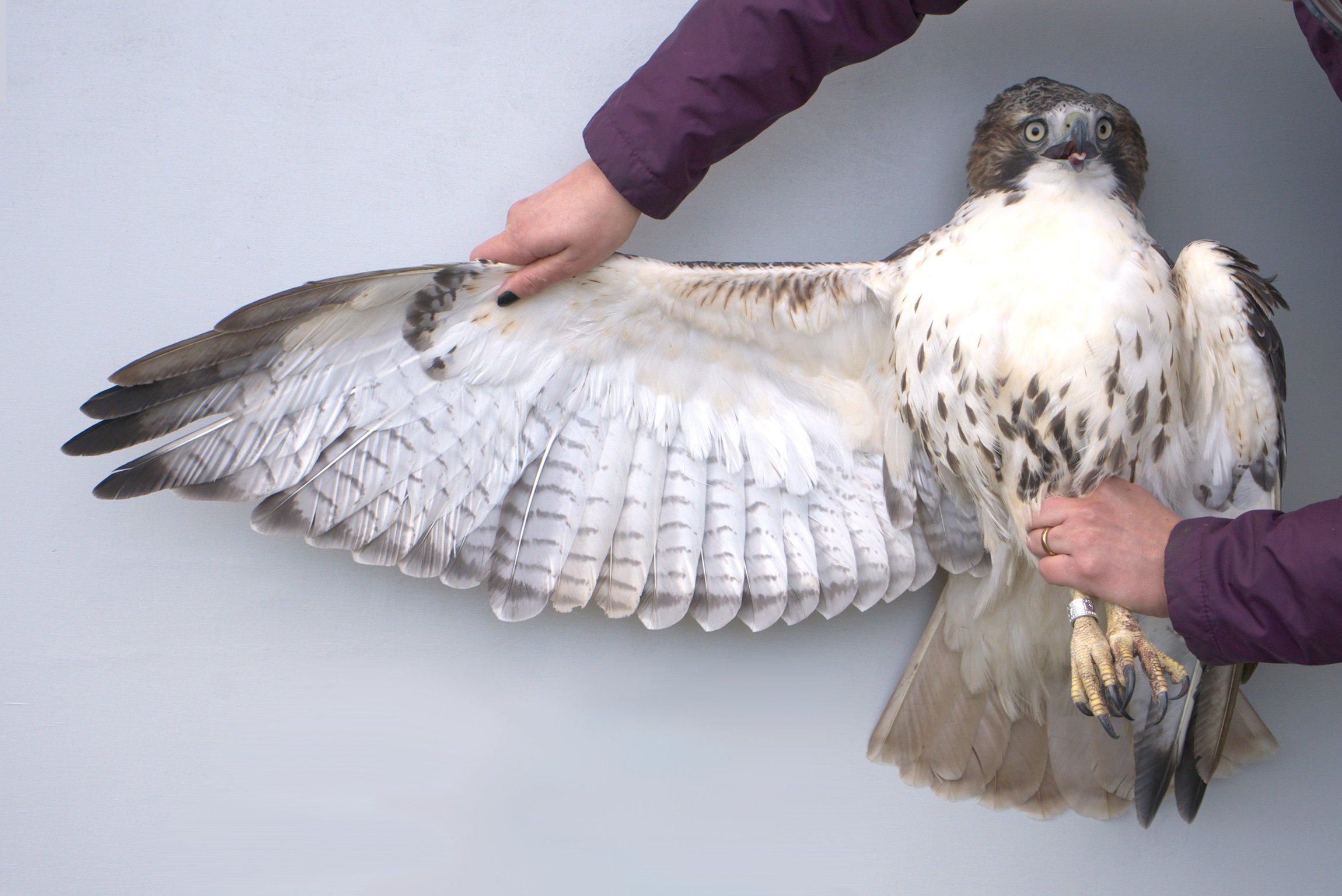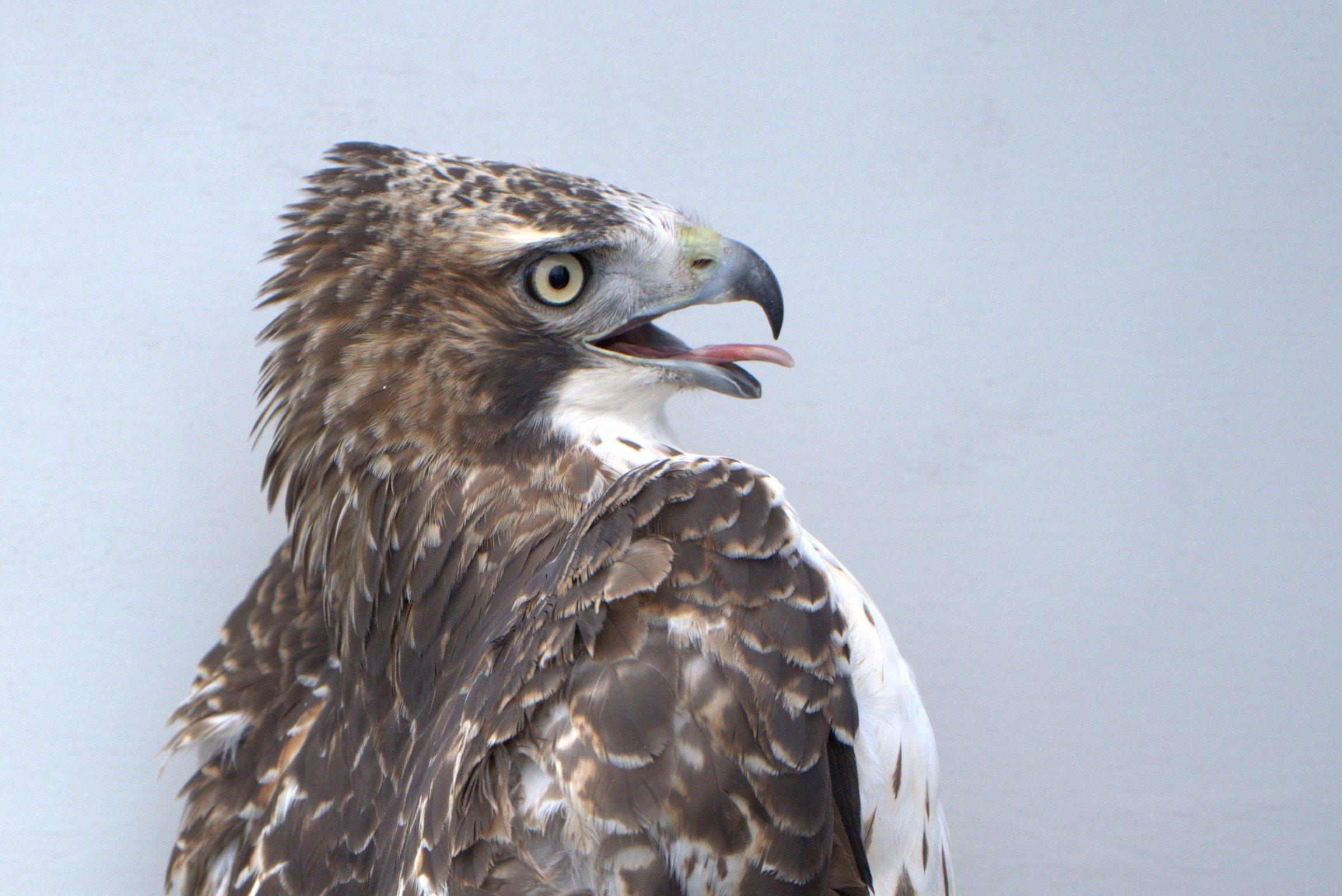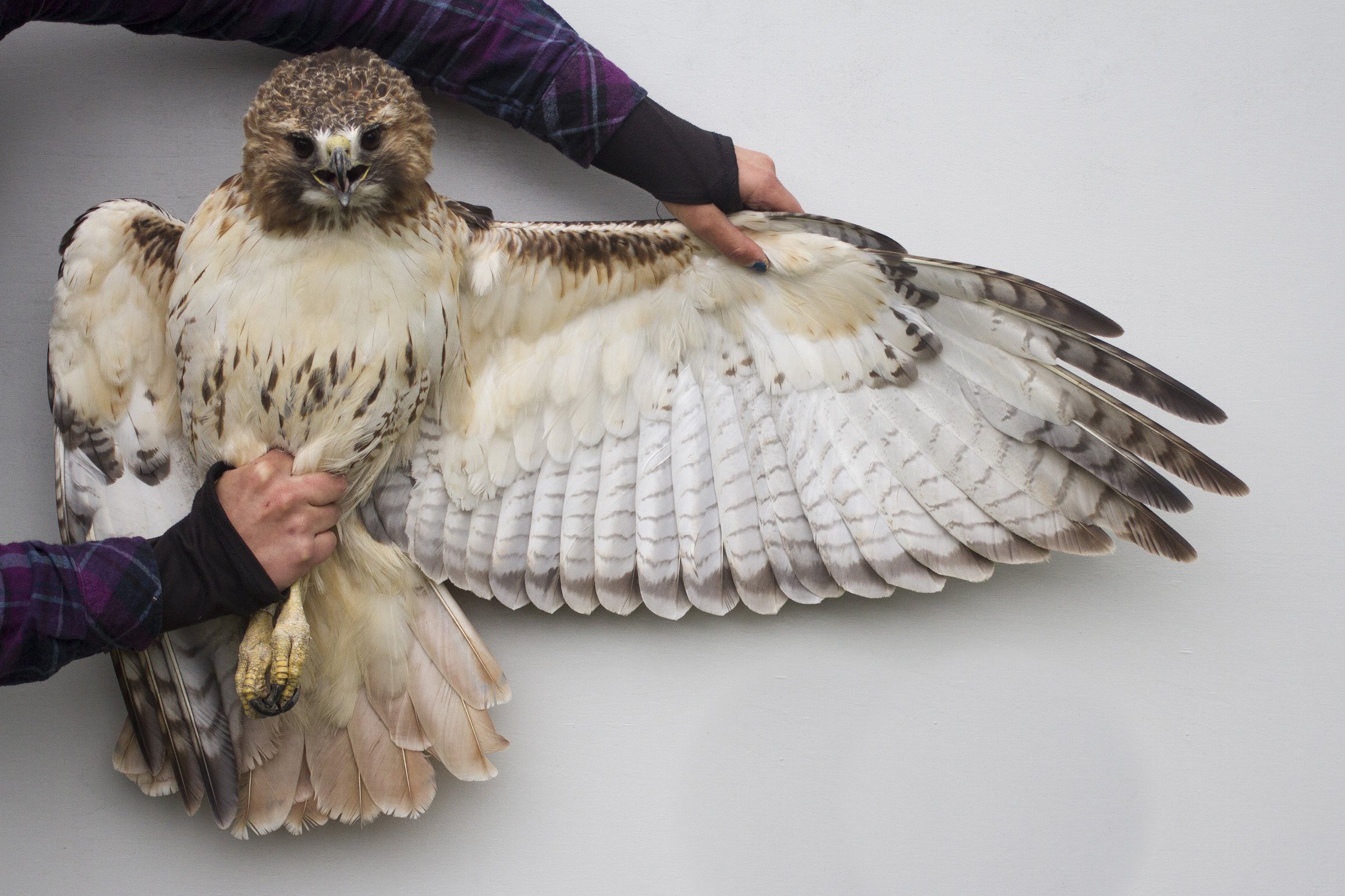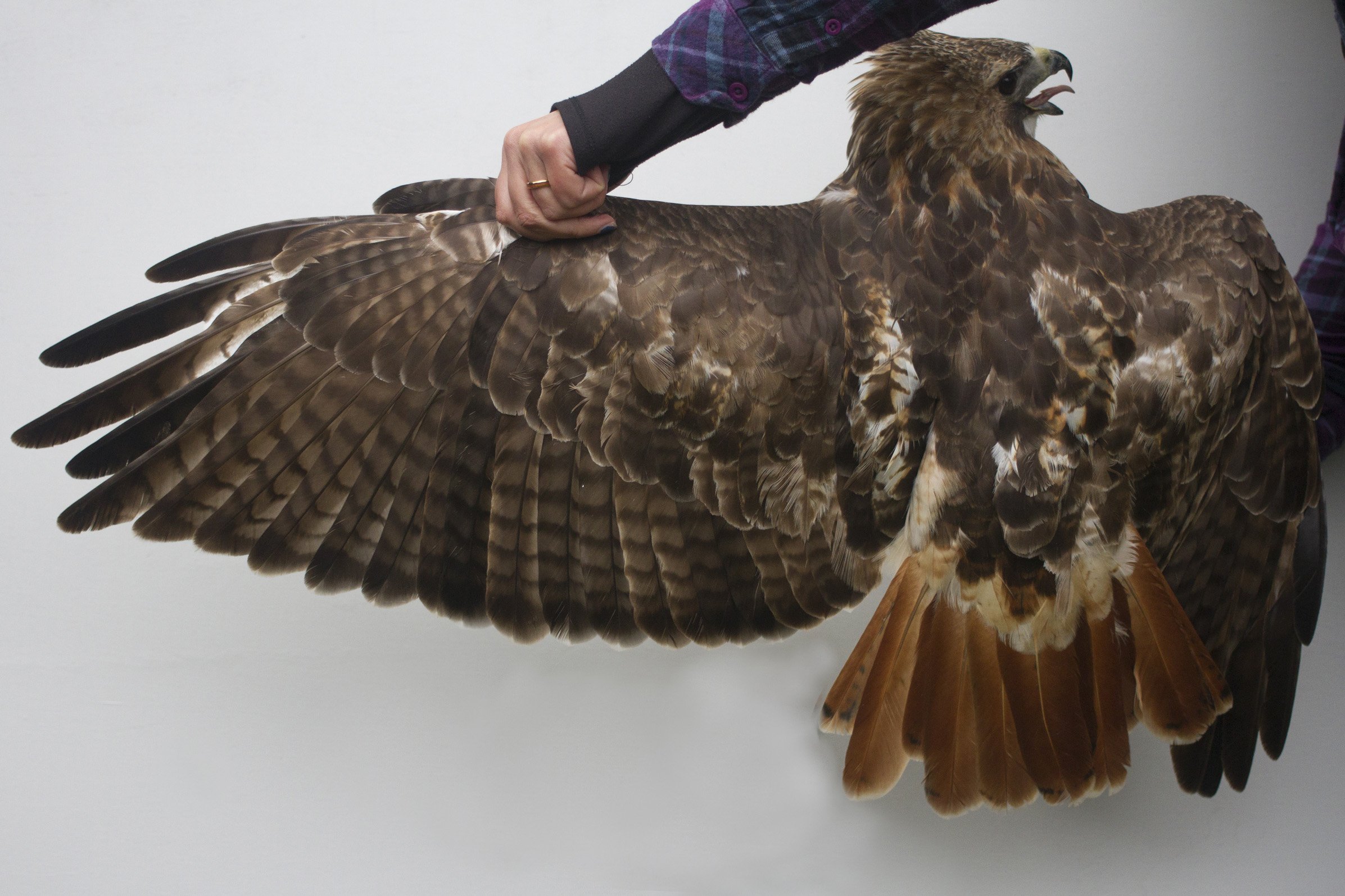Meet “Madison,” one of the newest members to Cornell Laboratory of Ornithology’s Red-tailed Hawk Project. Madison is named for Madison Audubon that provided funds for the transmitter.
The Red-tailed Hawk Project is an ambitious research collaboration covering a large geographic range, investigating the movement ecology, taxonomy, systematics, biogeography and genomics of the Red-tailed Hawk (RTHA) from Mexico to Alaska and Canada. Public education is also one of their goals.
Transmitter for the project, photo by Sue Kaehler
The Great Lakes provide an interesting complication to migration and Wisconsin is in a unique geographic position relative to them. One of the collaborators is focused specifically on movement ecology in the Great Lakes region. Cedar Grove Ornithological Research Station, along Lake Michigan’s shore, is in an excellent position and has the ability to help this project by trapping and harnessing adult RTHAs during fall migration, as they fly past our station. The transmitters store data and transmit when in cell tower range, yielding a complete picture of annual movements over time. Blood samples will be taken for the study's genomic dataset.
This project helps to advance current knowledge of RTHA movement in relation to the Great Lakes, the phenology of movements, differential migration patterns, the origins and questions of subspecies, linking phenotype to genotype to breeding locations and more. The maps produced through this project show movements of specific hawks passing through our state and learning where they spent their winter, their summer and details of their specific migration path. Map products of this study could serve as excellent “hooks'' to further interest and learning by the average person in Wisconsin.
Madison
“Madison,” an adult (pictures shown above by Sue Kaehler), was caught at Cedar Grove in Sheboygan County on October 31st while migrating down the Lake Michigan shoreline, and outfitted with a GPS transmitter. On November 4th, Madison was on the south side of Chicago and Sue Kaehler wrote, “Madison quickly headed south and has now successfully navigated past the dangerous airports in metro Chicago. That makes us smile!” Adult red-tails can not be sexed, however data locations during the breeding season will help decide the sex of the birds.
A map of Madison’s movements
Otto
“Otto,” another adult RTHA, was caught on October 24th (see photos above by Sue Kaehler) and outfitted with a transmitter. Winds were out of the wrong direction for migrating hawks so the Cedar Grove team and Bryce Robinson, Red-tail Project Leader, when road trapping. After the transmitter was attached, Otto was released where he was caught. On November 4th, Otto was still in the release area. See map below.
A map of Otto’s movements
Mark worked on a red-tailed hawk study with the DNR at the Waterloo State Wildlife Area in the early 1970s. At Waterloo there was a high density of RTHAs and they were all resident birds.
We look forward to providing updates on Otto and Madison who are part of the largest research project on Red-tails in North America.
Thanks to Jim and Suzanne Otto for sponsoring a transmitter. Madison’s transmitter was paid for from funds from the Jill Martin Wildlife Management Fund and from the donors to the Reckless Wrens Birdathon team's donation to Madison Audubon. Thanks also to Cedar Grove banding team for catching and placing the transmitters on both birds.
Written by Mark Martin and Sue Foote-Martin, Goose Pond Sanctuary resident managers, and Sue Kaehler, Director at Cedar Grove Ornithological Station












